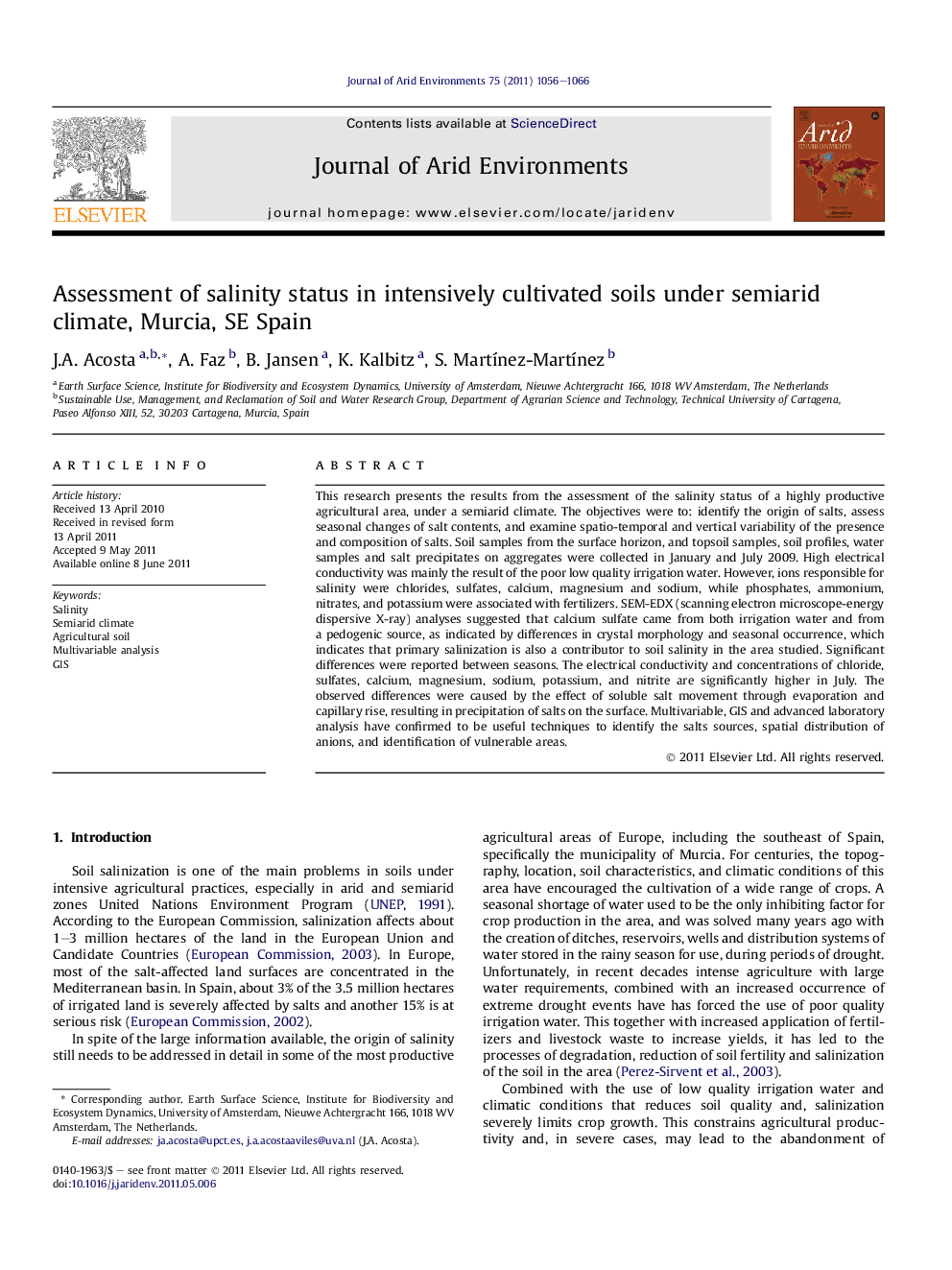| کد مقاله | کد نشریه | سال انتشار | مقاله انگلیسی | نسخه تمام متن |
|---|---|---|---|---|
| 4393567 | 1305492 | 2011 | 11 صفحه PDF | دانلود رایگان |

This research presents the results from the assessment of the salinity status of a highly productive agricultural area, under a semiarid climate. The objectives were to: identify the origin of salts, assess seasonal changes of salt contents, and examine spatio-temporal and vertical variability of the presence and composition of salts. Soil samples from the surface horizon, and topsoil samples, soil profiles, water samples and salt precipitates on aggregates were collected in January and July 2009. High electrical conductivity was mainly the result of the poor low quality irrigation water. However, ions responsible for salinity were chlorides, sulfates, calcium, magnesium and sodium, while phosphates, ammonium, nitrates, and potassium were associated with fertilizers. SEM-EDX (scanning electron microscope-energy dispersive X-ray) analyses suggested that calcium sulfate came from both irrigation water and from a pedogenic source, as indicated by differences in crystal morphology and seasonal occurrence, which indicates that primary salinization is also a contributor to soil salinity in the area studied. Significant differences were reported between seasons. The electrical conductivity and concentrations of chloride, sulfates, calcium, magnesium, sodium, potassium, and nitrite are significantly higher in July. The observed differences were caused by the effect of soluble salt movement through evaporation and capillary rise, resulting in precipitation of salts on the surface. Multivariable, GIS and advanced laboratory analysis have confirmed to be useful techniques to identify the salts sources, spatial distribution of anions, and identification of vulnerable areas.
► Soil salinity was mainly the result of the poor low quality irrigation water.
► Chlorides, sulfates, calcium, magnesium and sodium responsible for salinity.
► Phosphates, ammonium, nitrates, and potassium were associated with fertilizers.
► Significant differences between salt concentrations were reported between seasons.
► The observed differences were caused by the effect of soluble salt movement.
Journal: Journal of Arid Environments - Volume 75, Issue 11, November 2011, Pages 1056–1066